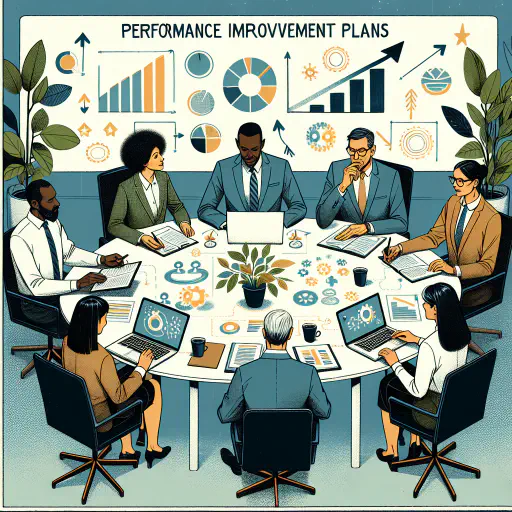
Maximizing Employee Potential: A Guide to Effective PIP Implementation
Is your organization missing out on untapped employee potential? Many companies struggle to bridge the gap between current performance and maximum capabilities of their workforce. This unrealized potential often results from unclear expectations, insufficient training, or poor communication.
Addressing these issues can lead to increased productivity, better employee engagement, and a stronger competitive position in the market. This blog will guide you through effective PIP implementation, helping you unlock your team’s full potential and drive organizational success.
1. Understanding Performance Improvement Plans (PIPs)
A Performance Improvement Plan (PIP) is a structured approach to addressing employee performance issues. It’s designed to help employees who are struggling to meet job expectations by providing clear goals, guidance, and support.
PIPs are not meant to be punitive. Instead, they should be viewed as a tool for fostering growth and development. When implemented correctly, PIPs can transform underperforming employees into valuable team members.
2. Key Components of an Effective PIP
An effective PIP should include the following elements:
- Clearly defined performance issues
- Specific, measurable goals
- A realistic timeline for improvement
- Resources and support available to the employee
- Regular check-ins and progress evaluations
- Consequences for failing to meet improvement targets
By incorporating these components, you create a structured framework for improvement that benefits both the employee and the organization.
3. Initiating the PIP Process
The first step in implementing a PIP is identifying performance issues. This should be based on objective data and observations, not personal opinions or biases.
Once issues are identified, schedule a meeting with the employee to discuss concerns and introduce the concept of a PIP. It’s crucial to approach this conversation with empathy and a genuine desire to help the employee succeed.
4. Setting Clear and Achievable Goals
The heart of any PIP is its goals. These should be:
- Specific: Clearly define what needs to be improved
- Measurable: Establish concrete criteria for measuring progress
- Achievable: Set realistic targets that challenge the employee without being overwhelming
- Relevant: Align goals with job responsibilities and organizational objectives
- Time-bound: Set deadlines for achieving each goal
Remember, the aim is to set the employee up for success, not failure.
5. Providing Necessary Resources and Support
A PIP should not just outline problems and expectations; it should also provide the tools and support needed for improvement. This might include:
- Additional training or mentoring
- Access to relevant resources or technologies
- Regular feedback and guidance from supervisors
- Adjustments to workload or responsibilities to allow focus on improvement areas
By providing these resources, you demonstrate your commitment to the employee’s success and increase the likelihood of positive outcomes.
6. Monitoring Progress and Providing Feedback
Regular check-ins are essential for tracking progress and providing timely feedback. These meetings should be scheduled at consistent intervals throughout the PIP duration.
During these check-ins:
- Review progress towards goals
- Discuss any challenges or obstacles
- Provide constructive feedback
- Adjust the plan if necessary
Remember to document these discussions and any changes made to the PIP.
7. Concluding the PIP
At the end of the PIP period, conduct a final evaluation to determine the outcome. There are typically three possible results:
- Successful completion: The employee has met all goals and improved performance
- Extension: Progress has been made, but more time is needed to fully meet objectives
- Termination: The employee has failed to make significant progress despite support
Regardless of the outcome, ensure that the process is fair, transparent, and well-documented.
8. Best Practices for PIP Implementation
To maximize the effectiveness of PIPs in your organization:
- Ensure consistency in application across all departments
- Train managers on proper PIP implementation and communication
- Foster a culture of continuous improvement and learning
- Use PIPs as a last resort, not a first response to performance issues
- Regularly review and update your PIP process based on outcomes and feedback
9. Legal Considerations
When implementing PIPs, be aware of potential legal implications:
- Ensure all PIPs are based on job-related criteria and applied consistently
- Document all performance issues, conversations, and improvement efforts
- Be aware of any relevant employment laws or union agreements
- Consider consulting with HR or legal professionals when developing your PIP process
10. Conclusion: Maximizing Potential Through Effective PIPs
When implemented correctly, Performance Improvement Plans can be powerful tools for unlocking employee potential and driving organizational success. By following these guidelines, you can create a PIP process that not only addresses performance issues but also fosters a culture of growth, development, and continuous improvement.
Remember, the goal is not just to correct problems, but to help employees reach their full potential. With patience, dedication, and the right approach, PIPs can transform struggling employees into valuable assets, benefiting both individuals and the organization as a whole.
As we wrap up this guide on effective PIP implementation, I challenge you to take action today. Start by identifying one employee who could benefit from a well-structured PIP. Don’t wait for perfection – begin with what you’ve learned here and refine your approach as you go. Set a goal to initiate the PIP process within the next week, even if it feels daunting.
Remember, small steps lead to significant improvements. Challenge yourself to have that first, potentially uncomfortable conversation with empathy and a genuine desire to help. As you implement your first PIP, pay close attention to the employee’s progress and your own growth as a leader.
By taking this step, you’re not just improving one employee’s performance – you’re cultivating a culture of continuous improvement in your organization. So, are you ready to unlock the hidden potential in your team?






